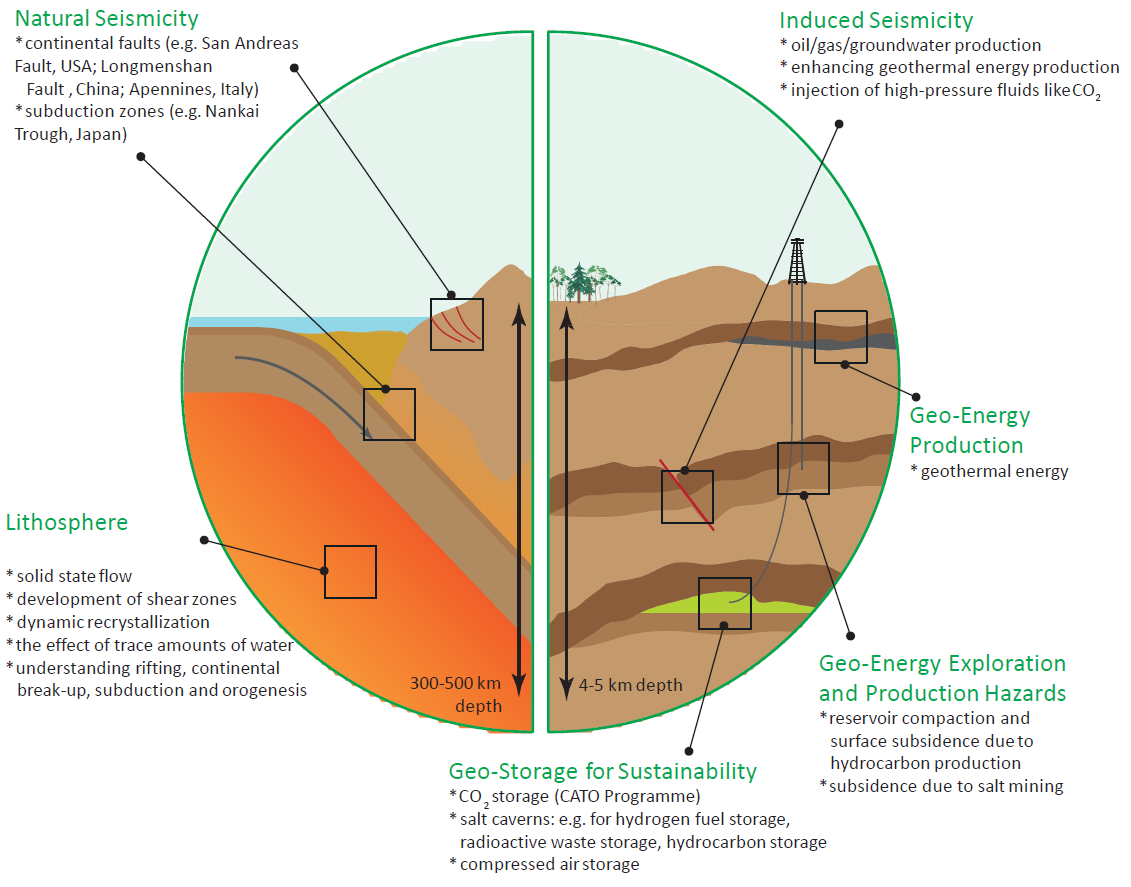Experimental Rock Deformation
Our researchers are driven by a curiosity for fundamental processes that control rock material behaviour.
This curiosity is not only key to understanding how planets work but also to answering societal questions, such as about induced seismicity, and safe geo-energy storage and production.
How hot do faults get when they slip? Can we safely store hydrogen in salt caverns? What microphysical processes drive mountain building? All these questions are related to the mechanical behaviour of rocks. If you are curious how transport properties and fluid interactions influence the mechanical behaviour of rocks you have come to the right place. The Experimental Rock Deformation Group conducts research on the mechanical behaviour and transport properties of Earth materials at conditions pertaining to the crust and upper mantle. Our research involves experimental work, coupled with microstructural study of the active microscale processes, plus microphysical and numerical modelling of these processes.

High Pressure Temperature Laboratory (HPT lab)
The HPT laboratory run by the Experimental Rock Deformation Group is equipped with a wide variety of facilities. These involve apparatus for deformation at high pressure and temperature, high temperature furnaces and apparatus for thermal, microstructural and IR analysis.

